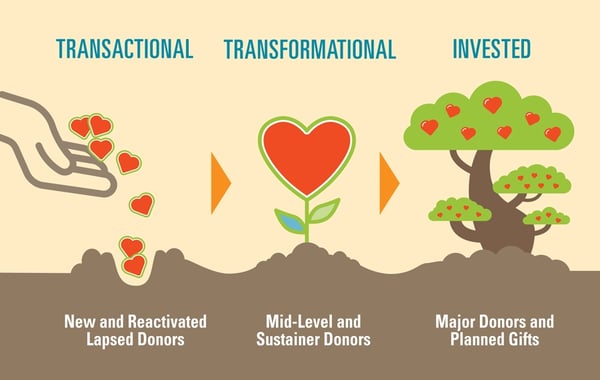
How to Use Giving Societies and Clubs to Retain and Upgrade Donors
Why are giving societies important for any nonprofit? Because they cultivate and steward donors, keeping donors loyal to the organization.
The heart of fundraising for nonprofits is to establish and build relationships with donors. Giving societies and clubs nurture these relationships, encouraging donors to give more gifts in the future and deepening the relationship from transactional to transformational. They increase donor loyalty and the value of a lifetime donor because they make donors feel special, like they’re part of the organization they support.
A giving society treats your donor like the hero she is and deepens her relationship with your charity.
In turn, the benefits you offer show how much you appreciate her support. Plus, any ongoing correspondence and/or scheduled events with club members only make that feeling stronger. When you apply these principles, it’s not only your organization, it’s her organization, too.
Here’s how to use giving societies and clubs to retain and upgrade your donors.
Transformational Donors Like Joining Giving Societies

Your giving societies shouldn't be reserved only for those invested, high-level donors that are able to contribute the most money or include your charity in their estate plans. Sustainer and mid-level donors, your transformational donors, need giving societies, too.
- Sustainer donors
Let’s say you have a donor who has committed to making a small monthly gift. Her gifts will continue until she decides to stop giving. But consider the advantages when she’s part of a club. She feels special, like she’s part of your team. In a sense, she has a feeling of ownership. This leads to continued and possibly increased giving. Did you know that most planned gift donors used to be sustainer donors? - Mid-level donors
With annual cumulative giving between $1,000 and $9,999, mid-level donors fall somewhere between your largest average donor and your smallest major donor. Why are mid-level donors so important? Because they’ve shown how much they care about your organization through their transformational giving. By giving the mid-level donor the attention offered by a donor club, it encourages her to deepen her commitment and become a major donor in the future.
A branded program can clearly articulate why a sustainer or mid-level commitment is a more meaningful option for your donor. Continually relay the impact her gift will have. For example, the impact of sustainer gifts are committed and predictable revenue, meeting mission needs year round, and saving resources.
Moving Society Donors Up the Ladder
Once your donors are part of a club, always be sure to check your lists to see which ones might be ready to move up to the next level. Take some extra time with these donors, build a relationship, then ask them to upgrade to the next level of giving.
More often than not, giving club members will agree to an upgrade request over non-members (if she has the ability to make the jump, that is). If you’ve done a good job of stewarding, three primary things will lead her to say “yes” to your request:
- She believes in your mission.
- She knows you’re using her money wisely.
- She believes in your team.
How to Create a Giving Society
When creating a giving society or donor club, consider these steps.
- A giving society or donor club is a group, but each member has individual needs. So be sure to treat each member as an individual.
- Convey a sense of exclusivity — being part of an important group of donors.
- Build a relationship with and steward each member. Don’t include an ask in every touch point.
- Also, be sure to design your societies with clear rules that are easy to understand. You don’t want to confuse your donors or deny them admittance to a donor club because of a misunderstanding. When in doubt, remember: It’s all about the donor, and she matters more than club guidelines.
If you haven’t already established giving societies and donor clubs at your nonprofit organization, consider creating them as part of your donor stewardship efforts. Clearly set the giving levels, define the benefits, name your clubs, then work at retaining and upgrading your donors.